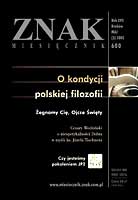
Why Philosophical Articles Published In Poland Often Have Poor Quality?
Dlaczego teksty filozoficzne publikowane w Polsce są często na niskim poziomie?
Keywords: Polish philosophy
More...
Keywords: Polish philosophy
More...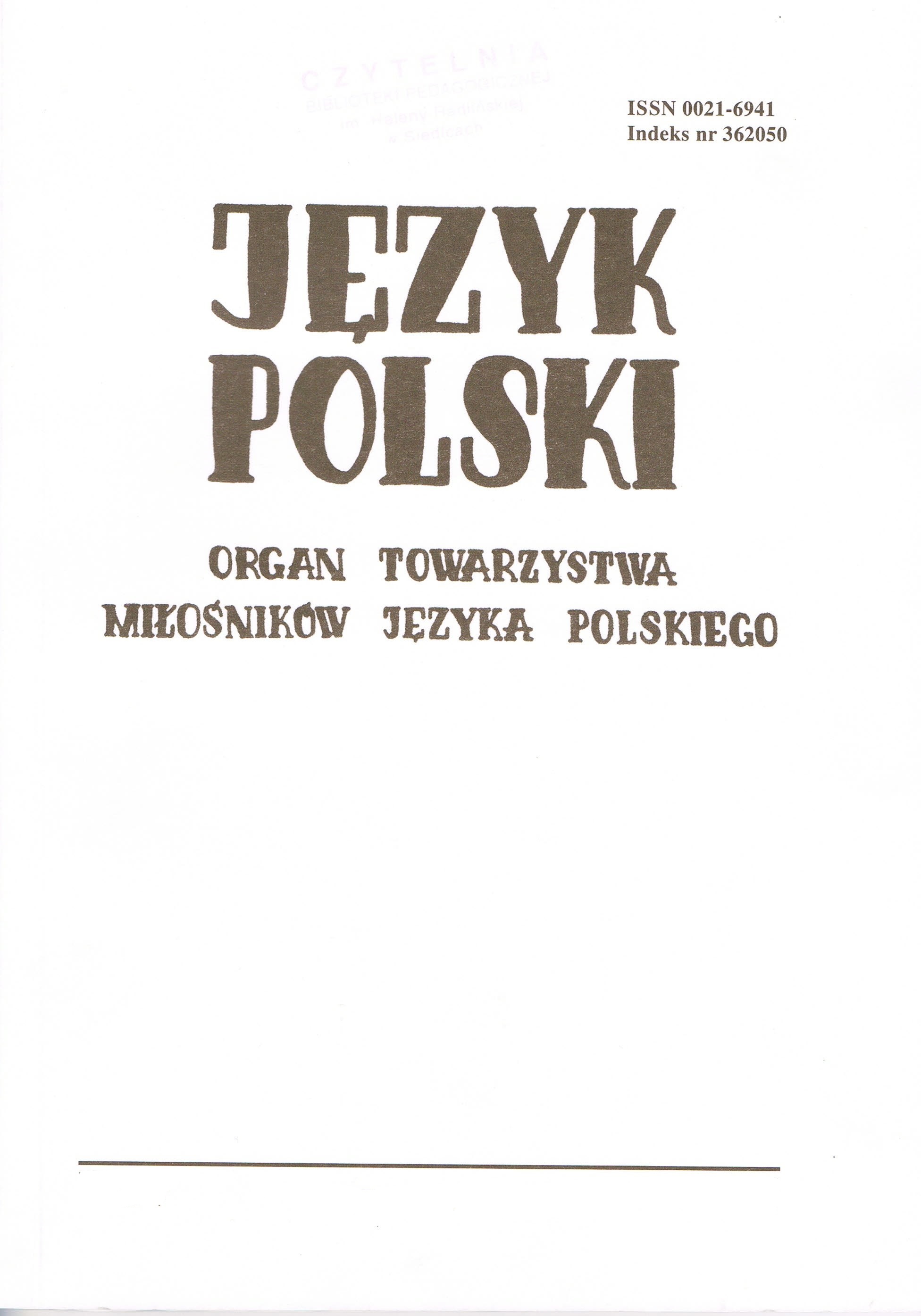
Keywords: dialectal text; Rzeczyca; Tomaszów Mazowiecki; Polish language; dialectology
More...![Jerzy Axer, Teksty tragików greckich jako scenariusze, [w:] Literatura Grecji starożytnej, red. H. Podbielski, t. 1: Epika, liryka, dramat](/api/image/getissuecoverimage?id=picture_2008_3082.jpg)
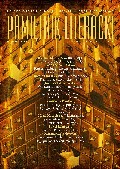
Keywords: Eugenia Prokop-Janiec; Prokop-Janiec's “Pogranicze polsko-żydowskie" ("Polish-Jewish Borderland")
The reviewer discusses Eugenia Prokop-Janiec’s newest book entitled “Pogranicze polsko-żydowskie (Polish-Jewish Borderland).” The scholar offers a new understanding of the category of borderland. At the same time she recalls the most recent Western publications about the Polish-Jewish issues in the Interwar period and suggests a new inspiring look at the neighborhood of two cultures.
More...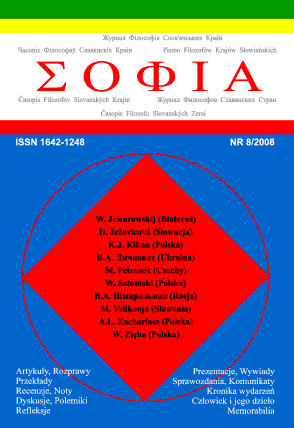
Review: Halina Rarot, Jadwiga Mizińska (red.), Rosja – Wielki Nieznajomy. Wybór tekstów ze współczesnej filozofii i socjologii rosyjskiej, „Colloquia Communia”, 2004, nr 2 (77), ss. 174
More...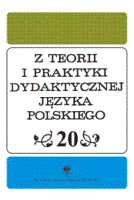
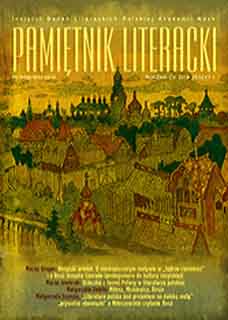
Keywords: Łukasz Garbal; Łukasz Garbal’s book on texts editing
The review contains a discussion about Łukasz Garbal’s book. Garbal’s ambition was to systematize the issues connected with contemporary literary texts editing, yet the mode of editorial problems presentation and scarcity of substantial solutions make the readers may feel it insufficient and would become disappointed.
More...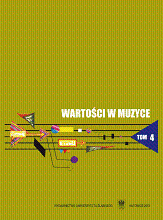
Keywords: gardens; music; art; art correspondence; aesthetic values
The author treats a garden as a rich and diversified “culture text” and the area of “cultural communication”. The topic of gardens has been fascinating for philosophers, writers and artists since time immemorial. The garden is a borderline between the world of nature and culture. The text confirms the hypothesis that an ideology typical of a given civilization period has always influenced the architecture-landscape orientations while these have been the source of many outstanding artistic works. The garden is a reflection of man’s culture, a poetical figure, a reflection of various directions and music styles. Multidimensional interpretations of “garden” brought sense to various aesthetic, cultural and religious orientations from the ancient times to modernity.
More...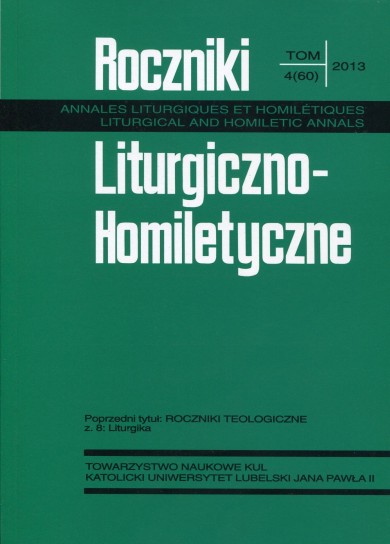
Keywords: homily; homilet; bishop; priest; deacon; the prophet; the rites of ordination; the source of preaching
Preaching the Word is one of the fundamental tasks of the Church. In his apostolic exhortation Verbum Domini, Benedict XVI reminded us that: “The homily is a means of bringing the scriptural message to life in a way that helps the faithful to realize that God’s word is present and at work in their everyday lives” (59). Anchoring preaching in the Holy Bible is a must if a preacher and the faithful are to experience the richness of the feast of the Word of God. The richness of the biblical readings included in “Rituals of the Episcopal, Presbyterian and Diaconal Orders” and used in a homily helps fully unveil the essence of hierarchical priesthood, its objectives and mission in the contemporary Church.
More...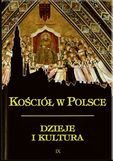
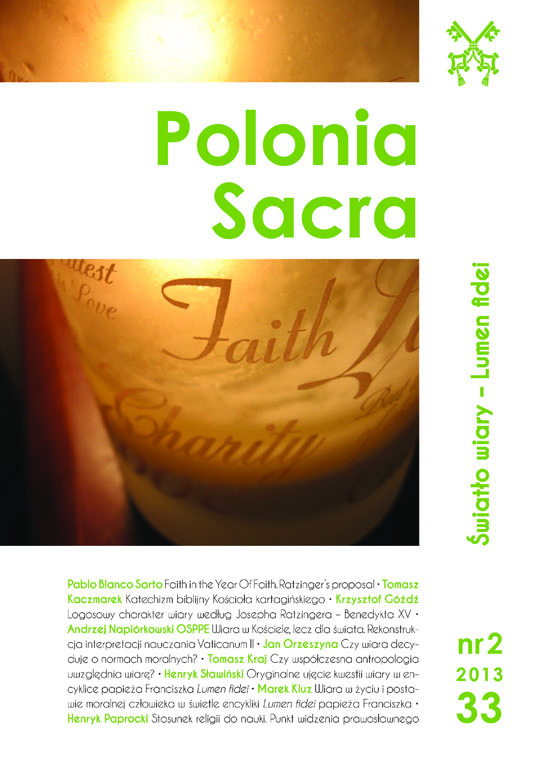
Keywords: Polish language standard; religious vocabulary; eucharistic prayers;
The article discusses the texts of eucharistic prayers from the perspective of recent religious vocabulary spelling rules approved by the Polish Language Council in 2010 and published in 2011. The article presents the characteristics of the most common linguistic errors that appear in the titles and texts of prayers. Both of them concern misspellings and punctuation errors. The first group of aberrations concern too frequent use of the capital letter and the wrong spelling of periphrases. The Author admit that although the writers may use capital letter by emotional reasons, nevertheless, they should use this consciously and responsibly as to not to obliterate the differences of meaning between words.
More...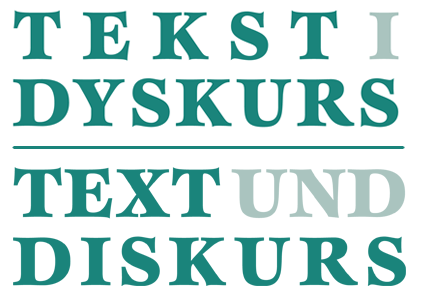
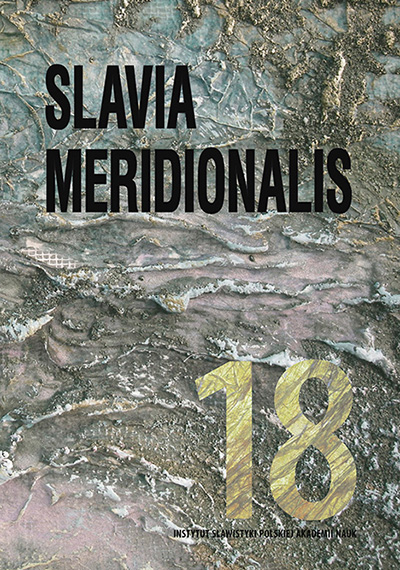
Keywords: Robert Elsie; bibliography;
The paper gives a list of selected publications of Robert Elsie.
More...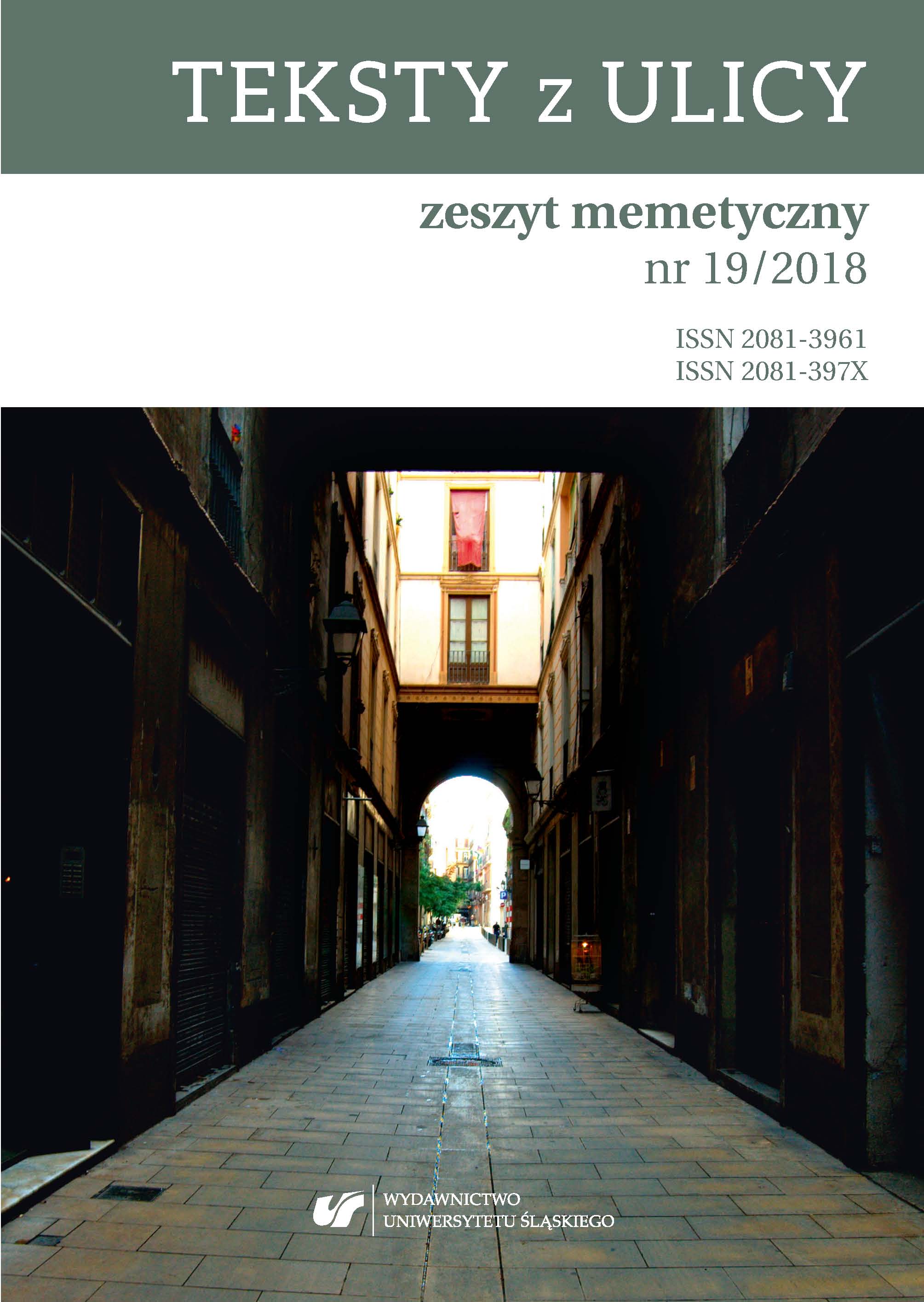
Keywords: bibliometric analysis; citation analysis; publication analysis; information sciences
In the paper, I present a bibliometric analysis of the articles published in “Teksty z Ulicy. Zeszyt memetyczny” between 2005–2008. Examination of the core of specialist terms builds on the base of “meme” item. Thus, a central hypothesis referring to the stability, relative stability and unitability of the core terminology allows formulating the conclusion towards a foundation of the level development of the particular division of humanities. The case study in the article is memetics.
More...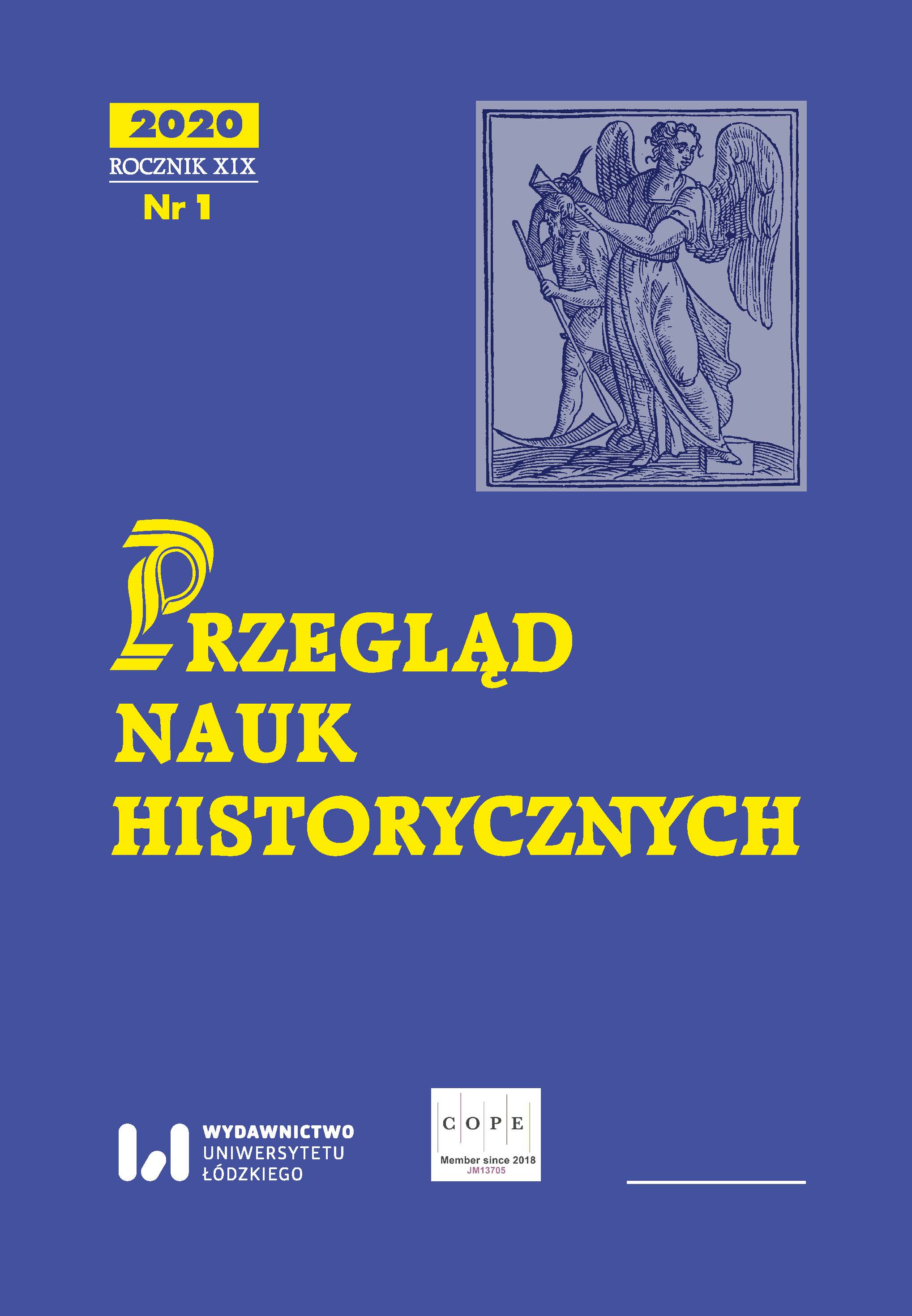
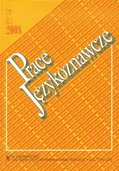
Keywords: legal language; statute; syntax; style; value and language forms of style
The article focuses on a linguistic description that is based on syntactic rules, thefoundation of which is the meaning. The basic unit of examination here is the normativesentence in which the modality category and grammatical meanings, indicated by certainlanguage forms are taken into consideration. The aims of the research are: a) to decidethanks to what the analysis of sentence makes it possible to determine the stylisticfeatures of legal acts; b) to explain how many stylistic features there are and what theirnames are; c) to define the range of the use of legal style language indicators in theexamined material. The research showed that the relationship between the syntacticanalysis and the style characteristics is based on the choice of an appropriate text unitand set of notions. A normative sentence is an example of an extraordinary syntacticstructure since its description leads to defining all of the crucial features of the legal style. A precise analysis of semantic categories makes it possible to examine stylistic functionswhich are indicated in the legal text by various language forms.
More...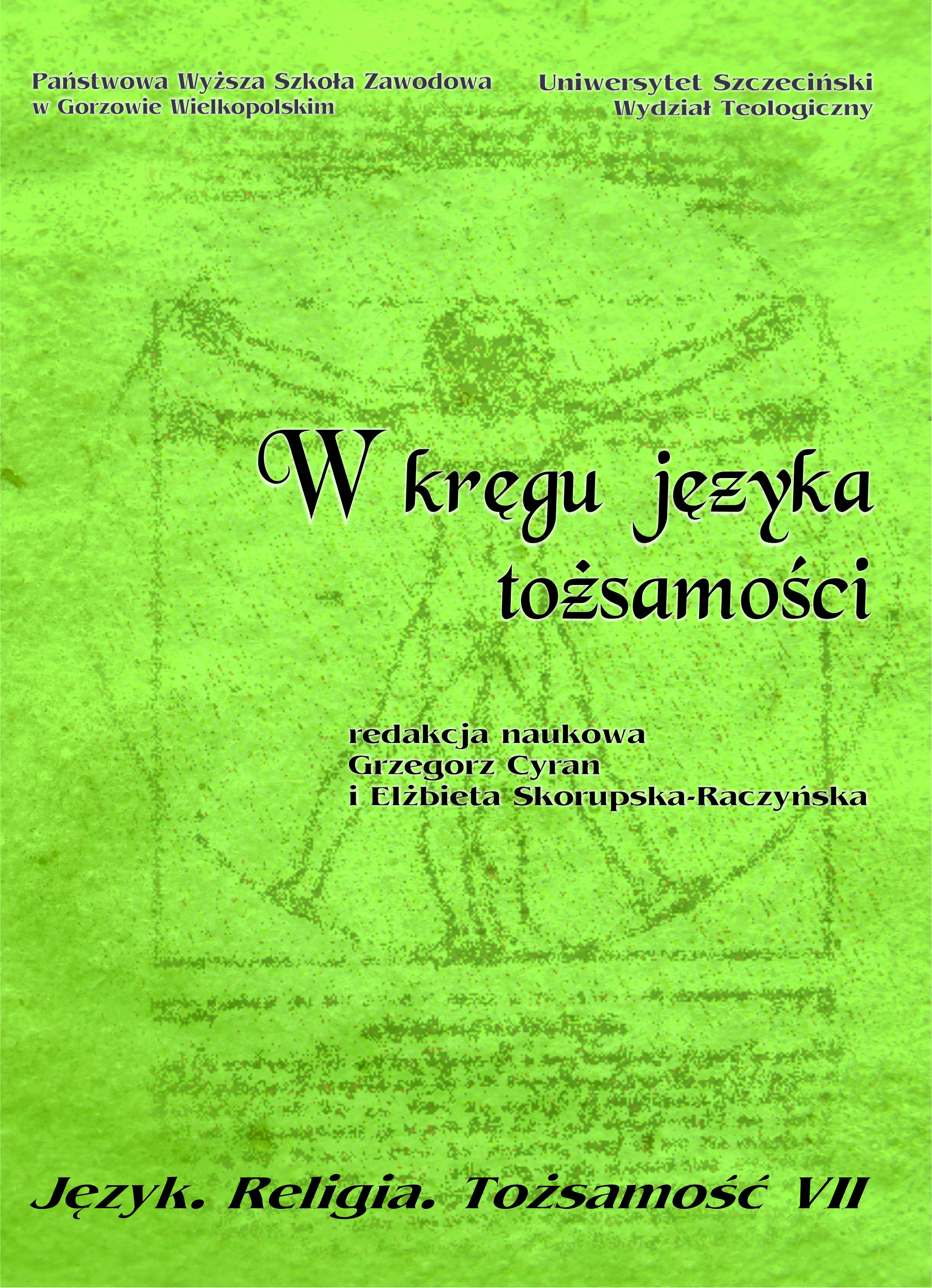
Keywords: retreats;Baroque;prayer;meditations;orders;history of spirituality;history of literature; Old Polish literature;monastic spirituality;Passion spirituality;Marian spirituality;
The article discusses the history of accepted and popular formsof methodical prayer in the 17th century, said both individually and in groups[convents and monasteries, church brotherhoods].The article presents some records and prints of historical value such asprayers, meditations and retreats. The authors are mainly writers representingvarious spiritualities, for example, Carmelite nuns and Carmelite friars, Benedictine nuns and Benedictine monks and Jesuits. Thus, the majority ofselected texts deals with the improvement of monastic life. Some texts areaddressed to various representations of secular circles, for instance churchbrotherhoods.
More...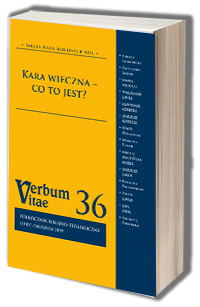
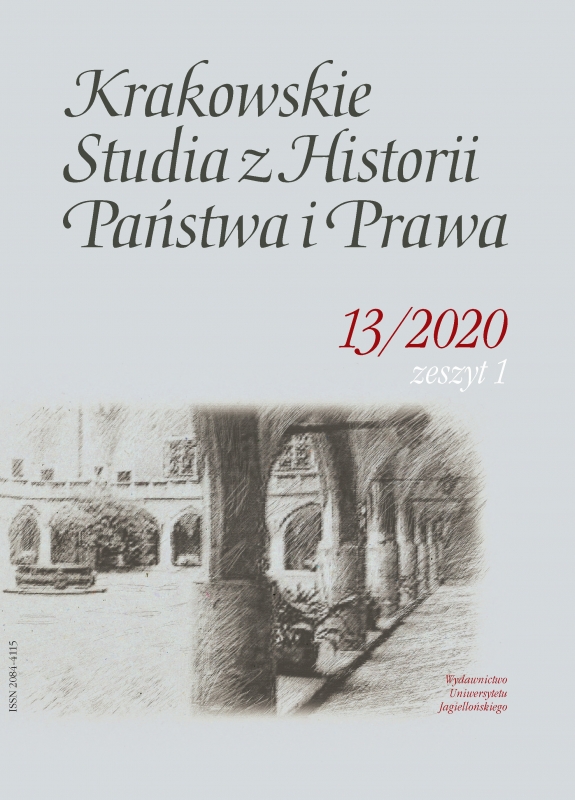
Keywords: ustrój; wolne miasto; źródło ; constitution; free city; source
Recently, two monographs have been published that are directly related to the research topic. The purpose of their writing was to supplement the existing Polish and European literature concerning the political history and organization of those European Free Cities which significantly influenced the development of the political and socio-economic relations of the continent over 150 years of the nineteenth and twentieth centuries. Closer attention to the above-mentioned subject has become urgent, especially due to the lack of relevant studies in European literature, which has been examined only fragmentarily. The emergence of free cities, sometimes also referred to as “countries”in Europe, was, of course, with the exception of Germany, mainly the effect of inter-empire or inter-state cooperation in order to prevent political and national conflicts by establishing a new European order to prevent such conflicts in the future (such as at the Vienna Congress, and Versailles and Potsdam). As it turned out, the adopted decisions were temporary, and their durations lasted from several to several dozen years. Each of them promulgated their own constitution at that time, the texts of which will be published in a separate publication.
More...